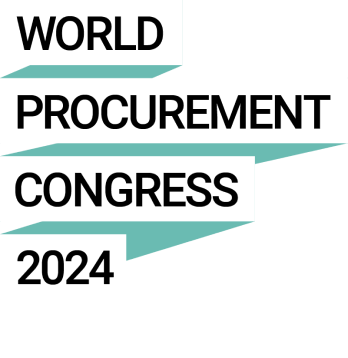Speakers and panellists took to the stage at this year’s World Procurement Congress (WPC) in London accompanied by the thumping strains of the Rolling Stones’ ‘Paint It Black’. Given the events roiling the supply chain at the time, the rock’n roll veterans’ ‘You Can’t Always Get What You Want’ might have been a more appropriate soundtrack.
Fast forward a few months, and with those same events continuing to challenge procurement teams, leaders have revealed what it is that they want.
For the first time in more than a decade of Procurement Leaders publishing its annual planning guides, delivering cost savings – long perceived as the function’s raison d’etre – has this year been unseated from the number one spot on the list of procurement priorities for 2023. Instead, developing team skills and talent tops CPOs’ agenda for the coming 12 months.
It caps a growing recognition of the importance of the people staffing today’s procurement teams. Part of that stems from their role in helping firms maintain their operations during the Covid-19 pandemic, but there is also an awareness that these same individuals and teams will continue to play a vital role in helping the function navigate an increasingly complicated and turbulent landscape.
Preparing the next generation of procurement professionals
The ranking of priorities offers clues to the nature of the skills that CPOs are seeking to develop or acquire. A glance at the second and third slots on the priorities list – driving operational efficiencies and reducing the likelihood or impact of supplier risk – bolsters the argument that functions will increasingly need teams who are freed up to think more creatively, engage more widely across the business, and feel comfortable with using data, among other tools.
“We need to reimagine what the day job should really look like: what can be done through automated processes, what can be done through better tooling,” said at the CPO of a professional services firm. “And embrace that, actually, we need to inspire the next generation of procurement people to be a bit more forward-thinking, [embrace] louder voices and whatever. But it needs to be better aligned to the business”
The increased prioritisation of skills and talent is evidenced by the breadth of measures firms are taking internally to boost their teams’ capabilities. Procurement Leaders’ Functional capabilities: Elevating procurement in an age of disruption report revealed that initiatives such as employee mentoring schemes are well entrenched in many firms: 64% of respondents reported they have such a scheme in place while a further 27% said they will have one within the next three years. But initiatives such as talent rotations between functions, internally developed procurement academies and university partnerships are among other measures that functions are implementing to cultivate skill sets.
Data: a powerful weapon
While procurement teams have been widely credited for helping mitigate the impact of labour shortages in the supply chain during the pandemic, the function itself has not been immune from the evolution of the labour market and the increasingly fraught competition for talent.
Procurement executives anticipate staffing problems to persist throughout 2023; 41% of respondents to the Strategic Planning Guide 2023 highlighted that skills shortages as barrier to success while the same proportion considered a lack of dedicated headcount as an impediment.
A well-automated, data-savvy function may not only help secure the efficiencies that teams seek: CPOs also increasingly recognise that such a structure poses more attractive proposition for attracting – and retaining – valuable personnel, while leaving them less susceptible to disruption if important individuals are ultimately lured to pastures new.
“Data can help challenge, get our buyers doing the creative work that they want to do and work for the company and can help us retain our buyers by innovating what we’re doing in procurement, giving people those new skills,” Warrick Matthews, CPO at Rolls-Royce’s civil aerospace operations, told delegates at WPC in June.
“Talent is a real issue. We really have to fight to keep our people, develop them and give them the offering that they deserve in a hybrid-working environment.”
Investment in talent a boon for costs
Despite its fall from the top spot, it does not mean that CPOs have abandoned cost-cutting entirely. Indeed, it occupies fourth position on the list in this year’s report. And in terms of how the function is appraised within the wider firm, cost savings remains the measure against which the overwhelming majority of CPOs (93%) say their function is benchmarked.
Yet defining cost savings can require a different approach than has traditionally been the case, given an environment in which scarcity and other fundamentals remain a threat to supply. As Melani Wilson Smith, CPO of PepsiCo, told a Procurement Leaders call organised in association with G100 and World 50 earlier this year: “The conversation needs to shift from the total cost to the optimised cost of the supply chain. When you think about the cost of not being on the shelf, that creates a very different conversation.”
Taking this opportunity cost into consideration, it helps add further insight as to why CPOs’s priorities may have shifted. By focusing chiefly on people and skills, as well as targeting efficiencies and reducing supplier risk, cost benefits – of multiple definitions – ought to follow.
“It’s a natural consequence: if you have great people who are well trained, commercially astute, they are good at talking to suppliers, innovation, business partnering, making it happen, then the money is going to come out,” one CPO told Procurement Leaders. “So, instead of focusing on effects, we need to focus on causes. That is where talent and people development is critical.”
If you join as a Procurement Leaders member, you can read the full research from this year’s Strategic Planning Guide, access detailed case studies and connect with your peers on what they are doing to develop talent within their team.


















